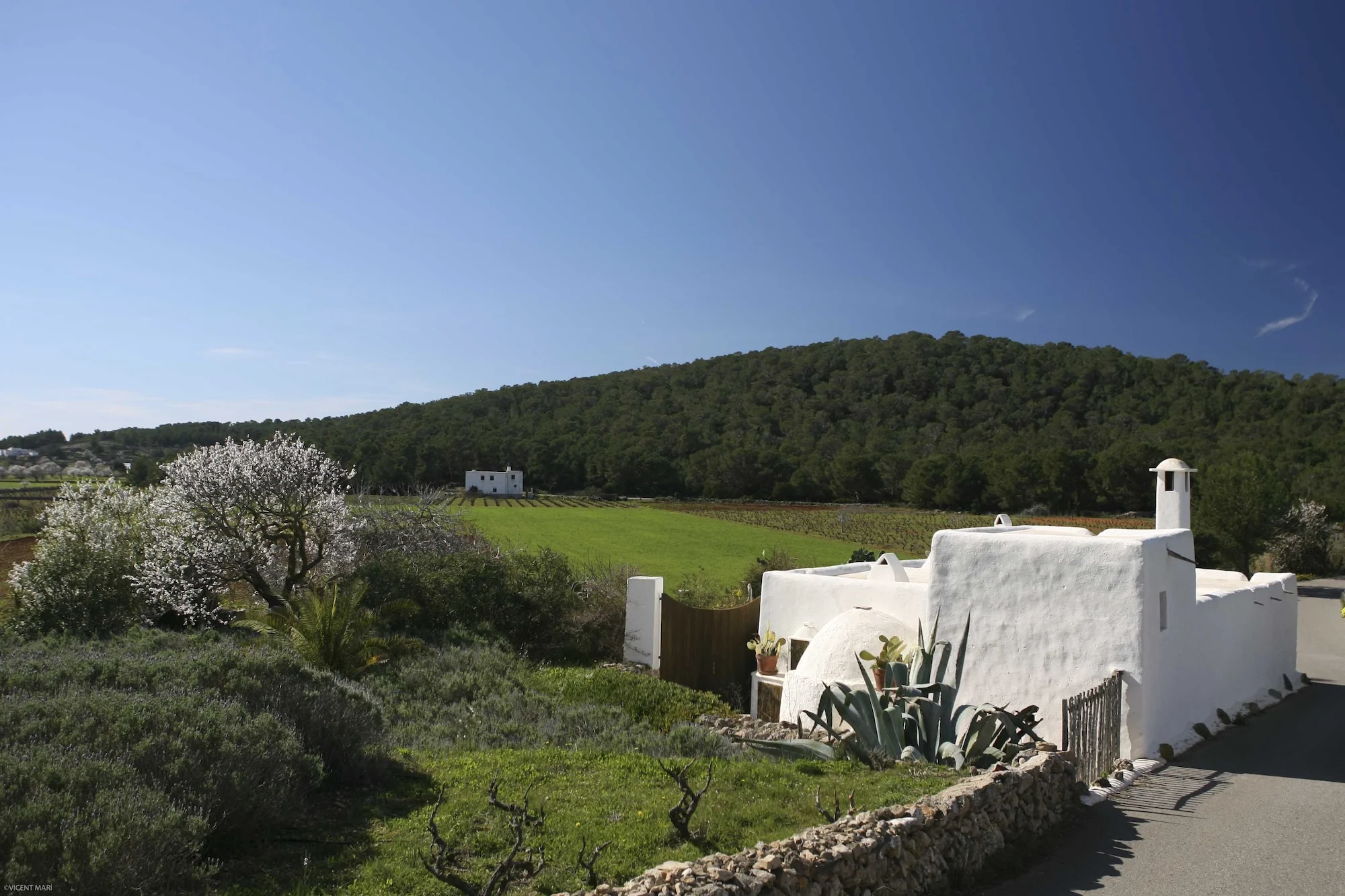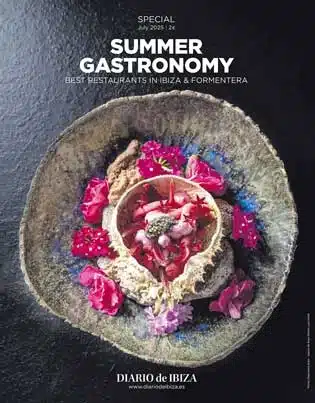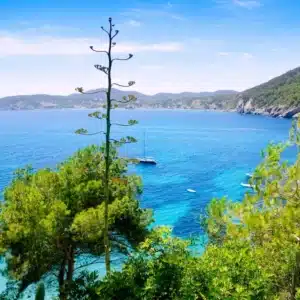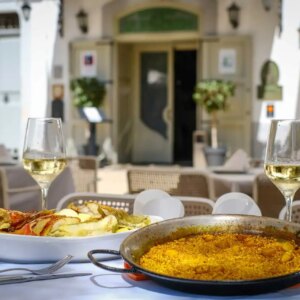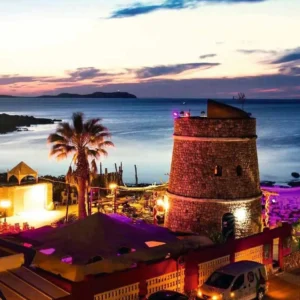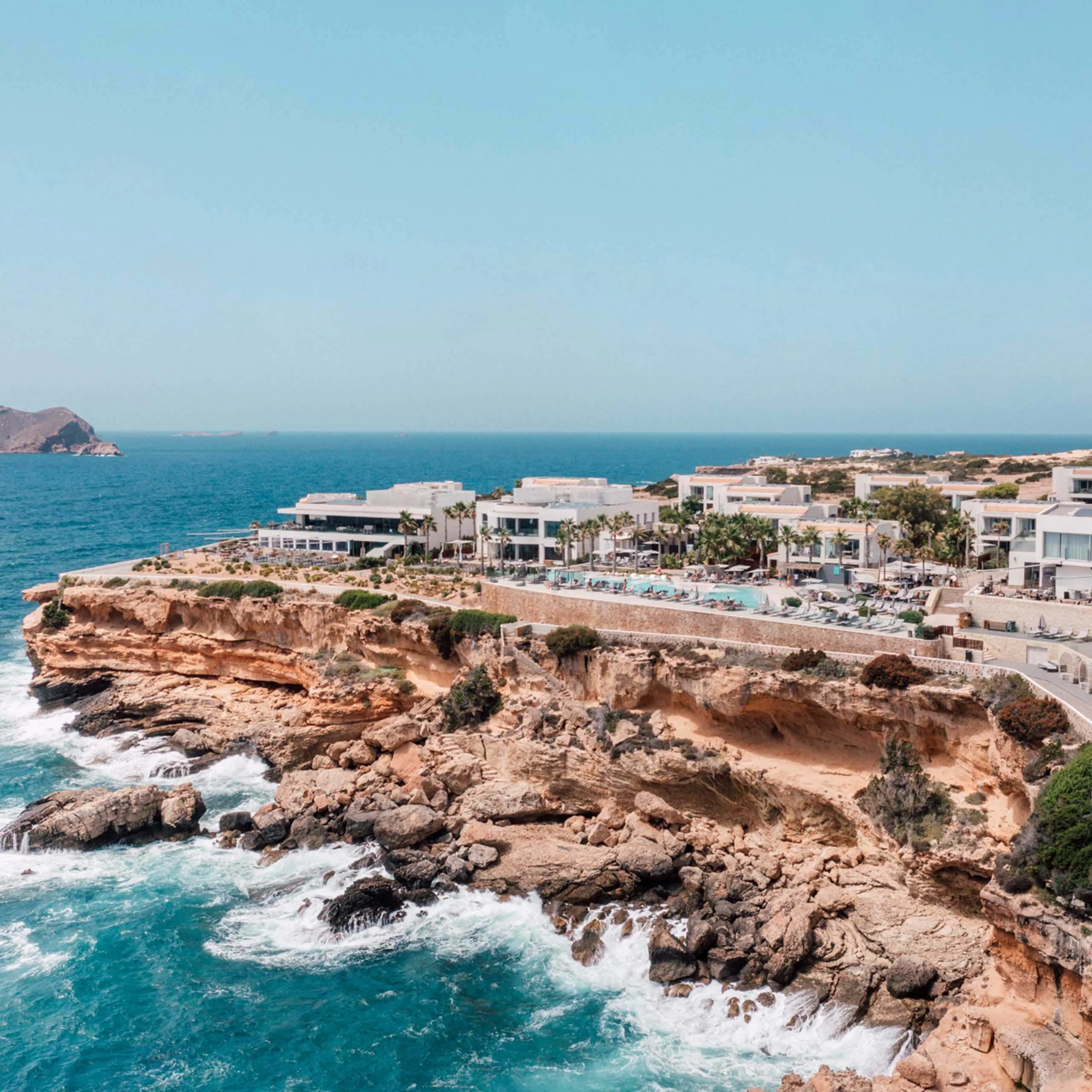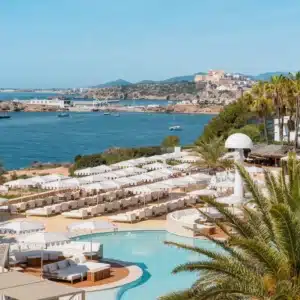When picturing Ibiza, many think of its legendary nightlife, golden beaches, and crystal-clear waters. However, beyond its vibrant tourism scene, the island holds a rich cultural and architectural heritage. One of its most emblematic features is the ‘casa payesa‘, a traditional Ibicenco farmhouse that embodies simplicity, sustainability, and functionality.
These rural homes, which have stood the test of time, tell the story of Ibiza’s past while continuing to inspire modern architecture.
The origins of the ‘casa payesa‘
The ‘casa payesa‘ has its roots in ancient times, with influences dating back to the Phoenician settlers who arrived on the island in 654 BC. Over centuries, Ibiza remained relatively isolated from external influences, allowing its architectural traditions to evolve uniquely. This farmhouse became the centre of rural life, designed to be practical, durable, and self-sufficient.
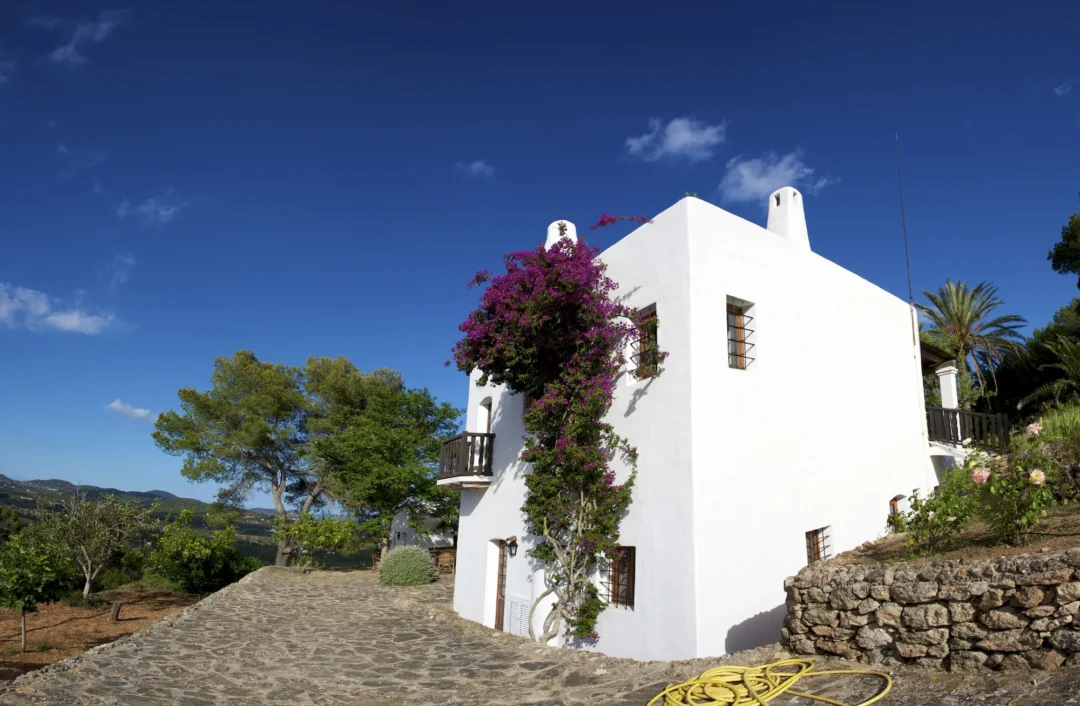
The design principles of these houses were not dictated by trends but by necessity. The island’s climate, with its hot summers and mild winters, shaped the thick-walled, small-windowed structures that we see today. Every aspect of this structure was created with function in mind, ensuring comfort and protection for those who lived there.
Key architectural features
A ‘casa payesa‘ is easily recognisable by its distinctive whitewashed walls, cubic shapes, and rustic materials. These homes were built using local resources such as stone, juniper wood, and lime, reflecting a deep connection to the island’s environment. Their design allows them to blend seamlessly into the countryside, harmonising with the landscape rather than dominating it.
Some of the most important architectural features include:
- Modular construction: unlike modern houses that are often built all at once, casas payesas were expanded over time. New rooms were added as the family grew, resulting in irregular yet charming layouts.
- Thick walls for insulation: the walls, made from local stone and covered in lime plaster, are incredibly thick. This provides natural insulation, keeping the house cool in summer and warm in winter.
- Flat roofs with rainwater collection: the flat roofs are made from wooden beams covered with a mixture of clay and limestone. These roofs were not just for aesthetics – they also served a practical purpose, collecting rainwater that was stored in underground cisterns.
- Small windows for climate control: to avoid excessive heat in the summer and retain warmth in the winter, casas payesas typically have small, deep-set windows. This feature helps regulate the indoor temperature naturally.
- Central porch (Porxo): one of the most characteristic elements is the ‘porxo‘, a covered terrace at the front of the house. This open space functions as a social and work area, often used for meals, relaxation, or daily activities.
- Minimalist yet functional nteriors: traditional interiors were simple, with minimal decoration. Built-in benches, alcoves for storage, and wooden doors added warmth and character while ensuring practicality.
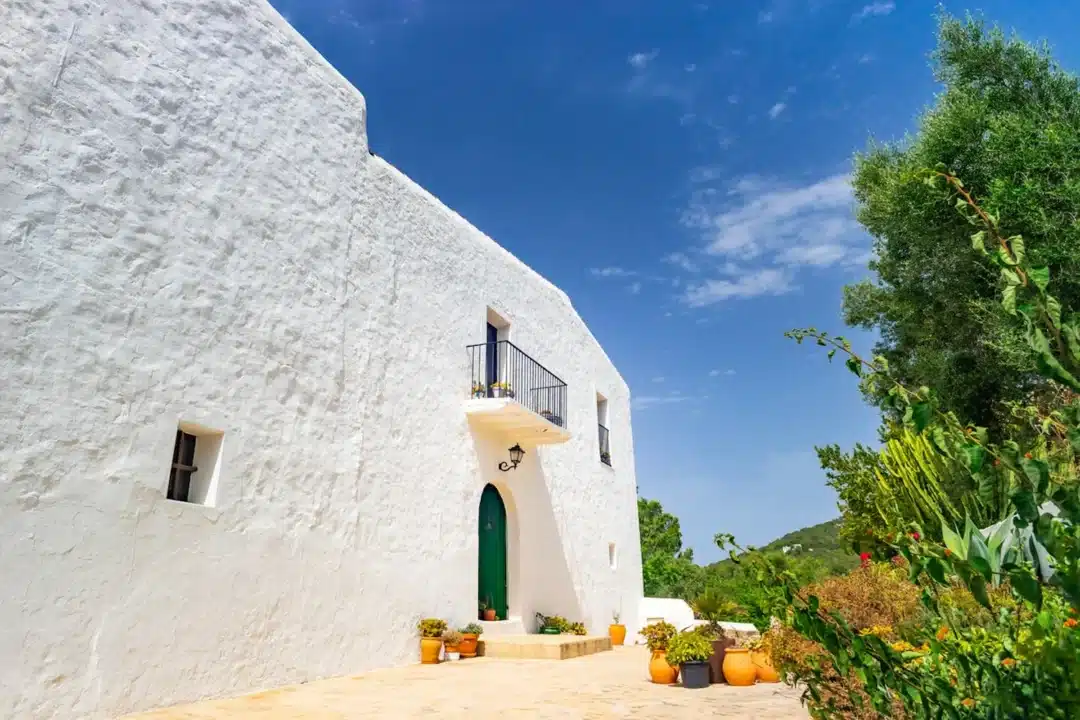
A symbol of rural lifestyle
More than just buildings, these ‘casas payesas‘ reflect the island’s traditional way of life. These homes were at the heart of self-sufficient agricultural communities. Families grew their own food, raised livestock, and relied on natural resources for their daily needs. Each farmhouse typically had a small vegetable garden, a bread oven, and an area for producing olive oil and wine.
Livestock was also a crucial part of rural life, and some buildings included stables or separate structures for animals. These farmhouses were built with the philosophy that everything had a purpose, and nothing was wasted – a mindset that is now being rediscovered in modern sustainable architecture.
The influence on modern architecture
Despite being centuries old, the ‘casas payesas‘ have had a significant impact on contemporary architecture. Renowned architects, including Le Corbusier, Erwin Broner and Josep Lluís Sert, admired their simple yet efficient design. Today, many modern villas and boutique hotels in the island incorporate elements of the traditional farmhouse, combining traditional materials with contemporary aesthetics.
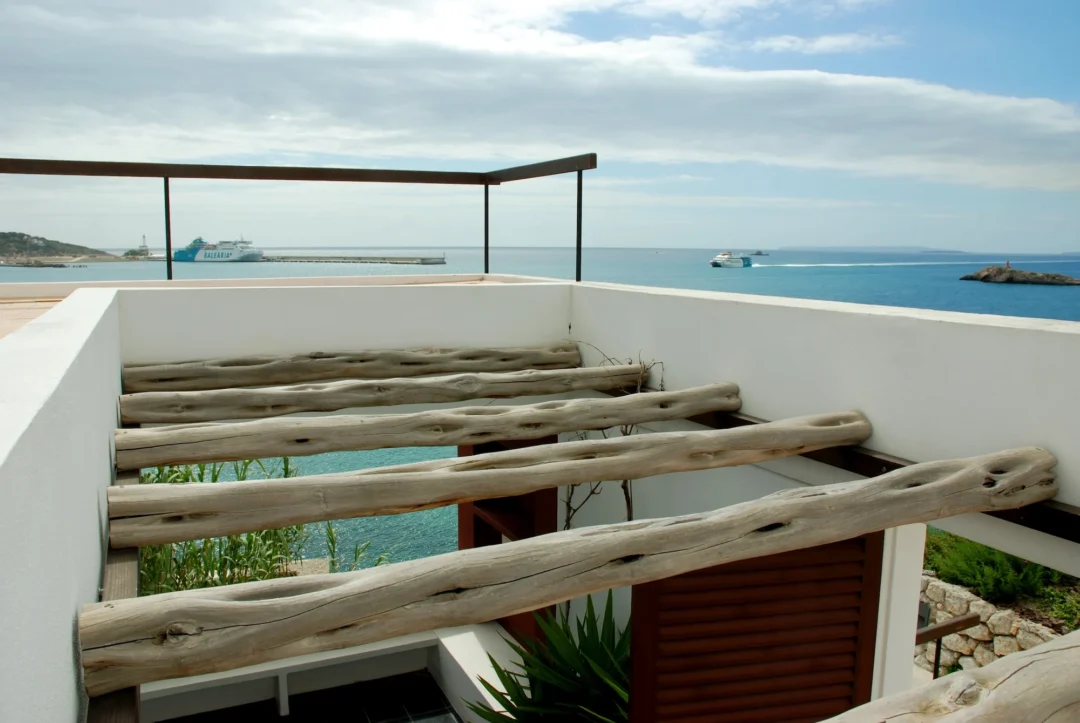
The principles of minimalism, functionality, and sustainability that define these farmhouses continue to influence the island’s architectural scene. Many homeowners are now restoring old houses, preserving their history while integrating modern comforts such as solar panels, underfloor heating, and large glass windows that maintain the balance between old and new.
How to experience a ‘casa payesa’ in Ibiza
For visitors interested in discovering this side of the island, there are several ways to discover a ‘casa payesa‘ firsthand:
- Stay in a restored one: some traditional farmhouses have been transformed into rural guesthouses or boutique hotels. Staying in one allows you to immerse yourself in Ibiza’s authentic countryside lifestyle while enjoying modern amenities.
- Visit the Ethnographic Museum of Ibiza (Can Ros): located in Santa Eulària des Riu, this museum is set in an original ‘casa payesa‘ and offers insights into the island’s rural heritage. Exhibits include traditional furniture, agricultural tools, and historical photographs.
- Take an architectural tour: several guided tours explore Ibiza’s traditional architecture, showcasing the importance of its farmhouses and their evolution over time.
- Dine at a rural restaurant: some ‘casas payesas‘ now house local restaurants, offering a unique dining experience in a historic setting. These establishments often serve authentic Ibicenco cuisine, giving you a taste of the island’s gastronomic traditions.

Preserving Ibiza’s architectural heritage
As Ibiza continues to develop, preserving its cultural heritage becomes increasingly important. Many organisations and individuals are dedicated to restoring and maintaining ‘casas payesas‘, ensuring they remain an integral part of the island’s identity. While some have been repurposed, their essence and historical significance remain intact.
For visitors, exploring these traditional farmhouses provides a deeper understanding of Ibiza beyond its beaches and nightlife. The ‘casa payesa‘ is a symbol of resilience, adaptability, and harmony with nature – values that continue to shape the island’s way of life.
These buildings are a testament to Ibiza’s history, culture, and commitment to sustainable living. Whether you’re an architecture enthusiast, a history lover, or simply a traveller looking for a unique experience, discovering these traditional farmhouses offers a glimpse into the island’s soul. As Ibiza evolves, the timeless beauty of the ‘casa payesa‘ remains a powerful reminder of its past and an inspiration for its future.
